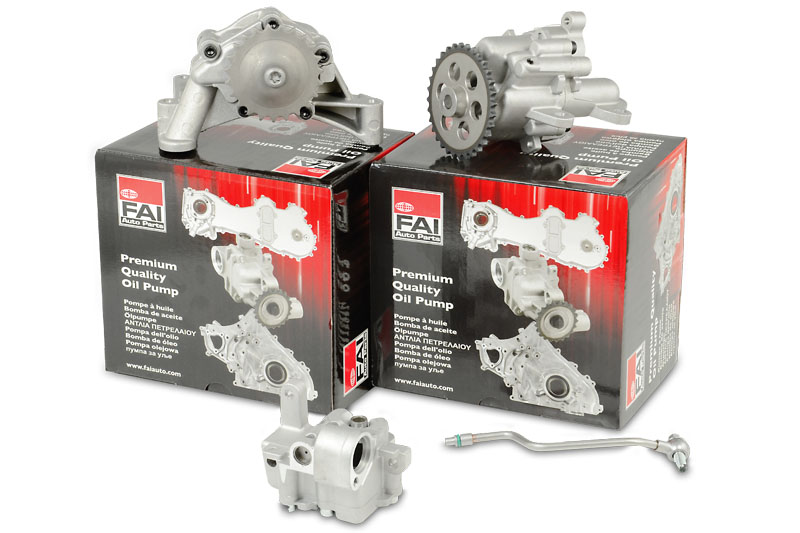
FAI’s Technical Director, Dominic Moxon outlines the emerging trends in oil pump systems and discusses common failures with oil pumps.
The passenger car market has demanded that the modern engine follow a trend of extended MPG, lower emissions and increased power for the latest generation that comes to market. This is, of course, the progression that we’ve all come to expect as car owners yet only professionals such as the readers of PMM know how this is all achieved; namely, narrowing tolerances and the subsequent increased pressure placed on componentry.
Preservation of oil pressure and its purity is the lifeblood of the engine and when it is neglected or failures occur, they cause several common issues. This is especially so within chain-driven vehicles, as many chain tensioners rely on consistent pressure and, of course, a well-lubricated chain system.
Sometimes it’s hard to know which came first, a failing oil pump that resulted in metal-on-metal swarf build-up or the other way around, caused by a different problem. Either way, the strain demands on oil pumps have have increased in recent years and pump sales have climbed as a result.
Diagnosis of a failing pump can be tricky as the symptoms overlap with a number of common issues. The classic symptoms of a failing oil pump are:
- Oil light on dash/low oil pressure
- Increased engine temperature
- Noisy valve train – especially from the hydraulic lifters that depend on consistent oil flow
- Oil pump whirring
- Bottom end knocking from crankshaft, pistons or small ends
As with all fitment processes, the basics surrounding the installation are as essential to a long-lasting repair as the components that are being replaced. There have been many common issues that we’ve seen over the years, many of which could have been prevented by:
- Re-filling with the OE-recommended grade of oil
- Checking for subsequent damage as a result of a previous failing pump
- Thoroughly cleaning all components (old and new) to ensure all contaminants are removed
- Avoiding excessive amounts of silicon RTV
Correct part identification via registration will help narrow down a like-for-like replacement but always check fitment notes for chassis range, year breaks and emission standards.
In cases of low oil pressure, many pumps are replaced as part of the diagnostic process and with them, fresh oil and filters as good practice. With any failure that results in one of the symptoms, the oil system may have suffered from a build-up of metallic particles, therefore FAI recommends replacing the pump, oil and filter to ensure a long-lasting repair.
If low pressure persists after a new pump is fitted, the underlying cause should be investigated and, in most cases, failing engine components such as crankshaft bearings will be the culprit of a change in tolerances and subsequent low pressure. If engine bearings do need replacing, the crankshaft must be checked for damage or wear, if either are found the crankshaft must be re-ground and oversize engine bearings fitted.
The FAI oil pumps range is long-established and developed for all major pump designs and drive types, covering over 1400 engine model variants. Designed to the latest specifications and fully factory tested, FAI has provided the aftermarket with a quality and cost-effective repair solutions for over 20 years.









